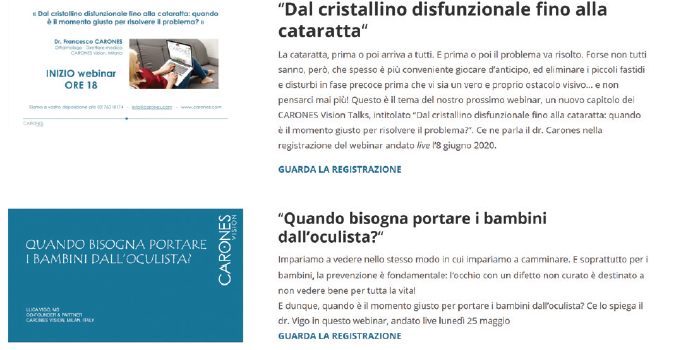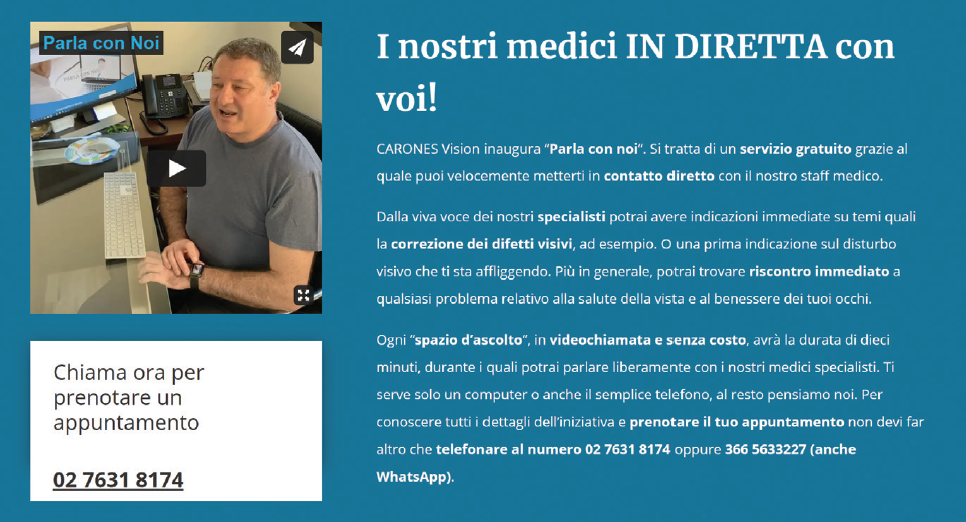
COVID-19 continues to drastically affect the marketing strategies that are used by ophthalmic practices around the globe. Restrictions, fear, and logistical limitations are some of the barriers that keep our potential customers—the patients—away from our practices.
Historically, one of the most valuable resources for marketing ophthalmic procedures such as refractive lens exchange, corneal refractive surgery, refractive cataract surgery, and ocular surface therapeutics was the on-site experience with the doctors and staff who counsel and educate patients while exemplifying the practice’s culture and philosophy. During this pandemic, providing patients with an in-person glimpse into what we have to offer has been nearly impossible. On-site activities such as seminars, receptions, group education, and screening campaigns simply are not feasible at this time.
This harsh reality prompted our organization to increase our use of digital marketing tactics to reach potential clients. Marketing campaigns on websites and social media channels and other forms of online advertising were common in most markets long before COVID-19, but with more competition for the customers’ screen time, these tactics alone may no longer be enough to grab patients’ attention.
With some creative thinking, we began to identify several opportunities outside of traditional digital marketing that we believe provide patients with something similar to the on-site experience. The aim of these initiatives, described under the numbered headings, is to re-create the patient experience by building a rapport between our practice and our potential customers. In general, we developed and employ these tactics with the following in mind: A voice conveys more empathy than a written message, a face is more endearing than an image, and a story is more engaging than a single scene.
1. WEBINARS AND VIDEO CALLS
Webinars. The following sentence is attributed to Sir Francis Bacon: “If the mountain won’t come to Muhammad, then Muhammad must go to the mountain.” We have adopted this mindset at our practice. If our clients cannot come to us, we must go to them. We now routinely conduct 30- to 45-minute webinars designed with the same philosophy and approach we used in a traditional in-person seminar. Each webinar is capped at 15 to 20 attendees to ensure that we maintain a personal approach to patient education. After a series of short presentations, we turn our focus to interacting with the patients and answering their questions.
The use of webinars is not only for revenue-generating topics such as surgery and therapeutics. We also design webinars on general ophthalmology topics to engage and address attendees’ needs. We advertise our webinars on social media and by direct email campaigns to individuals in our patient database. Recorded webinars are available on our website (Figure 1). So far, the return on investment has been incredibly positive, both in regard to customer satisfaction and scheduling procedures.

Figure 1. On this Carones Vision website page, patients can view the practice’s recorded webinars.
Video calls. With the same encrypted platform we use for webinars, we also offer one-on-one education and counseling through a program we call “Speak With Us.” Potential customers who are interested in learning more about the procedures we offer and their potential candidacy may engage directly with our physicians via a no-charge, 10-minute video call scheduled like an in-person appointment. We offer this option through our call center and on our website (Figure 2). Patients schedule their virtual appointments in the same way they would schedule traditional on-site visits. The value proposition to the patient is based on three key elements: no cost, information that comes directly from the doctor, and interpersonal communication to increase rapport. Most of these video calls result in the scheduling of surgical procedures.

Figure 2. The Carones Vision “Speak With Us” program allows patients to have a direct videocall with their preferred doctor.
2. VOICES, FACES, AND STORIES THROUGH WEBSITES AND SOCIAL MEDIA
Most people have felt the loss of personal relationships and direct interactions during this difficult period. This motivated us to replace or support all written information and static images on our website with short video clips. Doctors deliver all didactic information and expected results, patient experience coordinators and doctors provide messages about online counseling, and real patients share testimonials. Our call to action prompts patients to speak directly with one of our doctors by video call. We find that patients are more engaged by “Call us to plan your personalized experience,” which also aligns with our practice philosophy and with what we hope to deliver to our patients.
We have also adjusted our social media campaigns to include more videos than in the past. Almost all of these clips involve staff and doctors and occasionally patients. Not all posts are related to ophthalmology, surgery, or other core business topics. We offer holiday greetings, showcase daily interactions, and announce projects and initiatives in a personal way; the aim is to create a Carones Vision community. One example is the digital holiday recipe book we produced and distributed at the end of 2020. Each recipe was submitted by a Carones Vision doctor, staff member, or relative and included a personal introduction explaining why the recipe is important to the one who shared it (Figure 3). The positive feedback we received on this initiative was incredible.

Figure 3. One recipe from Carones Vision’s Christmas recipe book. The personal introduction explains the significance of the recipe and helps to establish a personal connection with the reader.
LOOKING TO THE FUTURE
What else can be done to differentiate our practice from our competitors’ and to rise above the challenge of reaching our potential customers from afar? Telemedicine and remote consultations may be options. However, for true premium practices such as ours, these options alone are suboptimal to grow patient engagement. (In our practice, we use telemedicine and remote consultations only in specific cases if and when patients cannot physically visit the office.)
In the near future, when I hope that all restrictions are lifted and life returns (somewhat) to normal, I expect a large number of patients will once again prefer direct, in-person, in-office contact with doctors and staff. I believe, however, that the digital strategies mentioned earlier will continue to play important roles in reaching new potential customers in a personalized manner.




